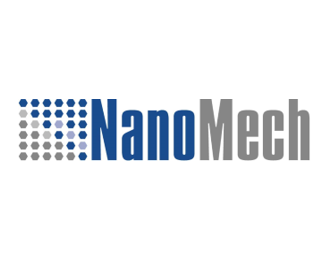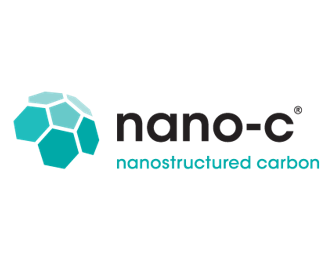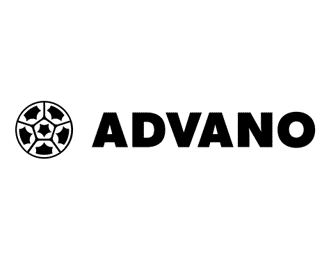123Fab #31
1 topic, 2 key figures, 3 startups to draw inspiration from

“Every 18 months, we see a doubling in the number of consumer products claiming to contain nanomaterials in Europe”, said Steffen Foss Hansen, associate professor at the Technical University of Denmark and co-founder of The Nanodatabase.
Nanomanufacturing is the production of improved and nanoscale materials, structures, devices, and systems. There are two approaches to nanomanufacturing. The first is the top-down approach, which consists of reducing large pieces of materials all the way down to the nanoscale, and the second is the bottom-up approach, which consists of creating products by building them up from atomic- and molecular-scale components. The term nanofabrication is often used instead of nanomanufacturing, but they are two very different concepts that differ in their economic dimension. While nanofabrication refers to researching and testing the feasibility of developing nano-scale materials and processes, mainly at the laboratory level, nanomanufacturing refers to the industrial-scale manufacture of nanotechnology-based objects, with emphasis on low cost and reliability.
If nanomanufacturing was mainly used for electronics (aiming to put the power of all of today’s present computers in the palm of your hand), applications in other industries are now emerging. In the solar energy sector, for instance, installation costs have been reduced by manufacturing flexible solar cell rolls instead of rigid crystalline panels. Batteries made from nanomaterials can be recharged much faster than conventional batteries. It also contributes to improving air quality thanks to a better performance of catalysts used to transform vapors escaping from cars or industrial plants into harmless gasses. Finally, several applications have been developed for the construction industry to improve the durability and enhanced performance of construction components (e.g., carbon nanotubes for better durability and crack prevention of cement), energy efficiency and safety of the buildings, facilitating the ease of maintenance and to provide increased living comfort.
All these applications of nanomanufacturing rely on a growing number of processes, mentioned above.
The top-down approach:
- Nanoimprint lithography: a process for creating nanoscale features by “stamping” or “printing” them onto a surface. A great example of such a process is Canon Nanotechnologies, the market and technology leader for high-resolution, low cost-of-ownership nanoimprint lithography systems and solutions for the semiconductor industry. Their innovative Jet and Flash Imprint Lithography technology creates the extremely small features required in today’s state-of-the-art semiconductor memory devices.
However, the process requires a lot of energy, uses chemicals (sometimes very toxic), and produces waste. Often, the results are quite unique and not easily replicable. This is why bottom-up processes are increasingly being used:
The bottom-up approach:
- Chemical vapor deposition: a process in which chemicals react to produce very pure, high-performance films. The US-based startup Grolltrex is a manufacturer of single-layer graphene sheets that uses a patented transfer and processing chemical vapor deposition method. This method allows Grolltrex to create high-performance graphene products, in addition to offering them at lower costs.
- Dip pen lithography: a process in which the tip of an atomic force microscope is “dipped” into a chemical fluid and then used to “write” on a surface, like an old-fashioned ink pen onto paper.
- Self-assembly: a process in which a group of components is assembled to form an ordered structure without outside direction. Scientists continue to explore this concept, which has become especially important in the field of nanotechnology. Indeed, as miniaturization reaches the nanoscale, conventional manufacturing technologies are failing because it has not yet been possible to build machinery that assembles nanoscale components into functional devices.
Although the applications of nanomanufacturing are wide and promising (in electronics, healthcare, energy, environmental issues, etc.), major challenges explain the slow transition from lab demonstration to industrial-scale manufacturing. The main obstacles include:
- Developing production techniques that are economically viable
- Controlling the precision of the assembly of nanostructures
- Testing the reliability and establishing methods for defect control. Currently, defect control in the semiconductor industry is non-selective and takes 20-25% of the total manufacturing time. Removal of defects for the nano-scale systems is projected to take up much more time because it requires selective and careful removal of impurities.
- Maintaining the nano-scale properties and quality of nano-system in high-rate and high-volume production.
- Assessing the environmental and social impacts, as the emergence of nanotechnology has led to the pollution of trillions of minuscule plastic particles in the oceans, waterways, and even in our bodies. High-tech workers are exposed to unusual solvents and rare earth materials that have raised safety concerns.
To scale, not only does nanomanufacturing require more time and investment to scale, but the health and environmental issues linked to the production of new nano-elements need to be addressed quickly. Nanomanufacturing would, if these issues are solved, play a key role in the innovations of many industries.
2 Key Figures
184 Nanomanufacturing startups
registered by Pitchbook
Market size expected to reach $122bn by 2025
The market size of nanoproducts is expected to reach $122bn by 2025, a CAGR of 14.3% from 2020.
3 startups to draw inspiration from
This week, we identified three startups that we can draw inspiration from: NanoMech, Nano-C, and Advano.

NanoMech
NanoMech manufactures lubricants, coatings, and cutting tools with their proprietary nanoscale additives that increase production rates and part quality while reducing setup times and costs.

Nano-C
Nano-C develops nanostructured carbons for use in high-value energy and electronics applications. It develops nanostructured carbons for use in high-value energy and electronics applications.

ADVANO
ADVANO combines nanotechnology with fundamental chemical engineering principles to accelerate the renewable energy revolution. Its silicon nanoparticles increase the energy density lithium-ion batteries 30-40% without sacrificing battery life or increasing the battery cost.
